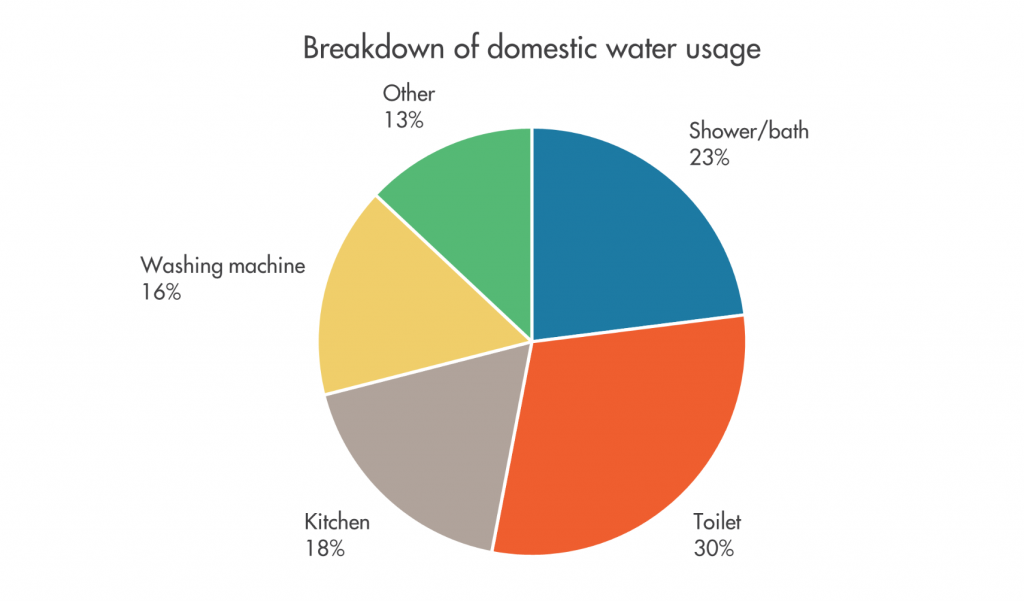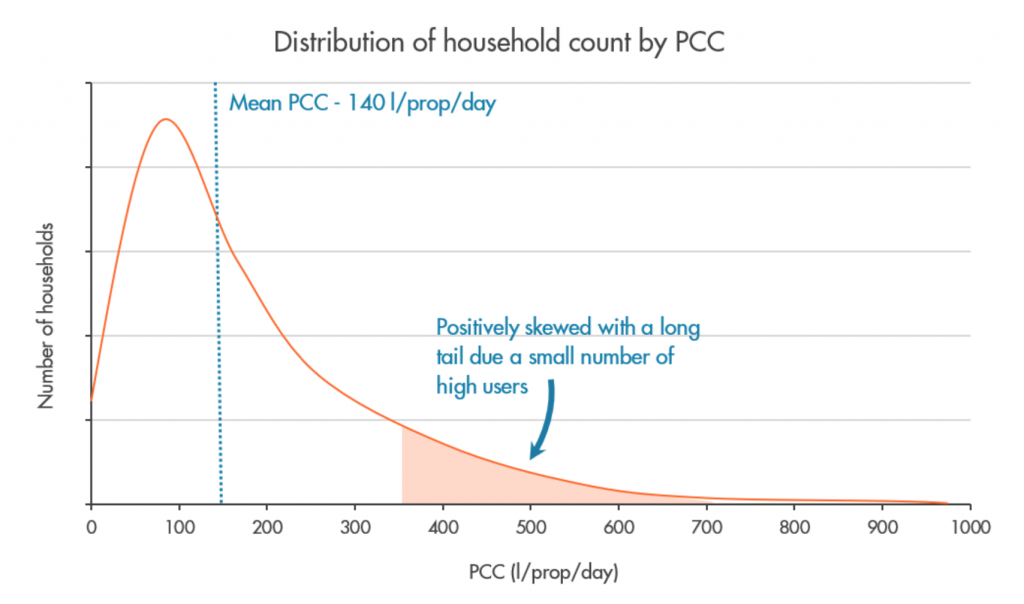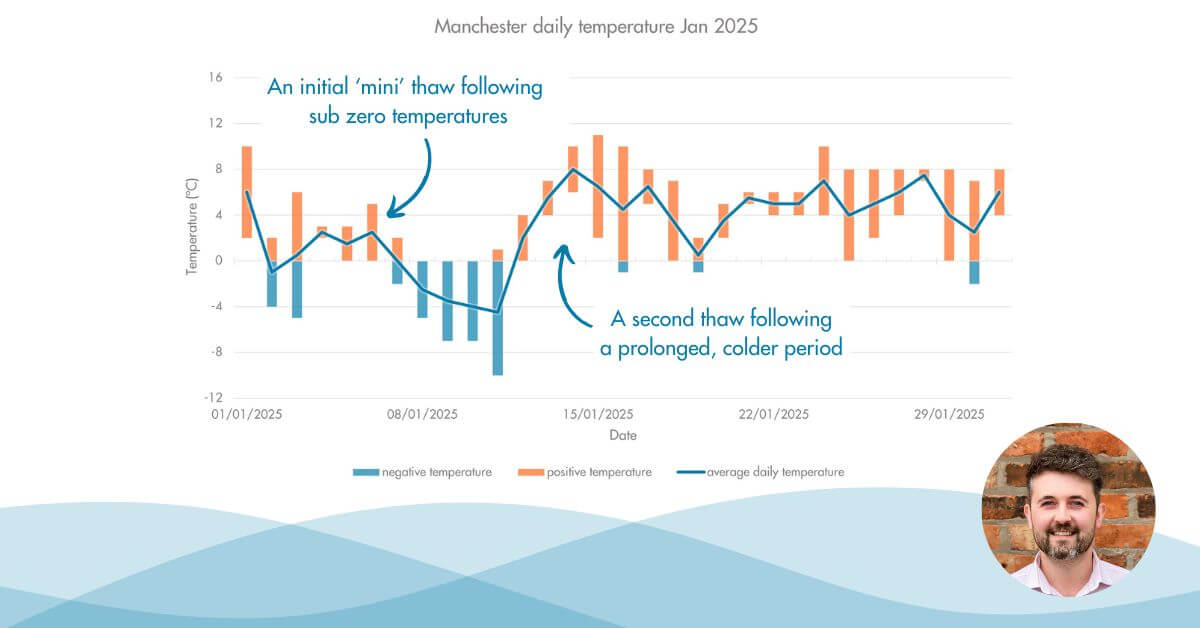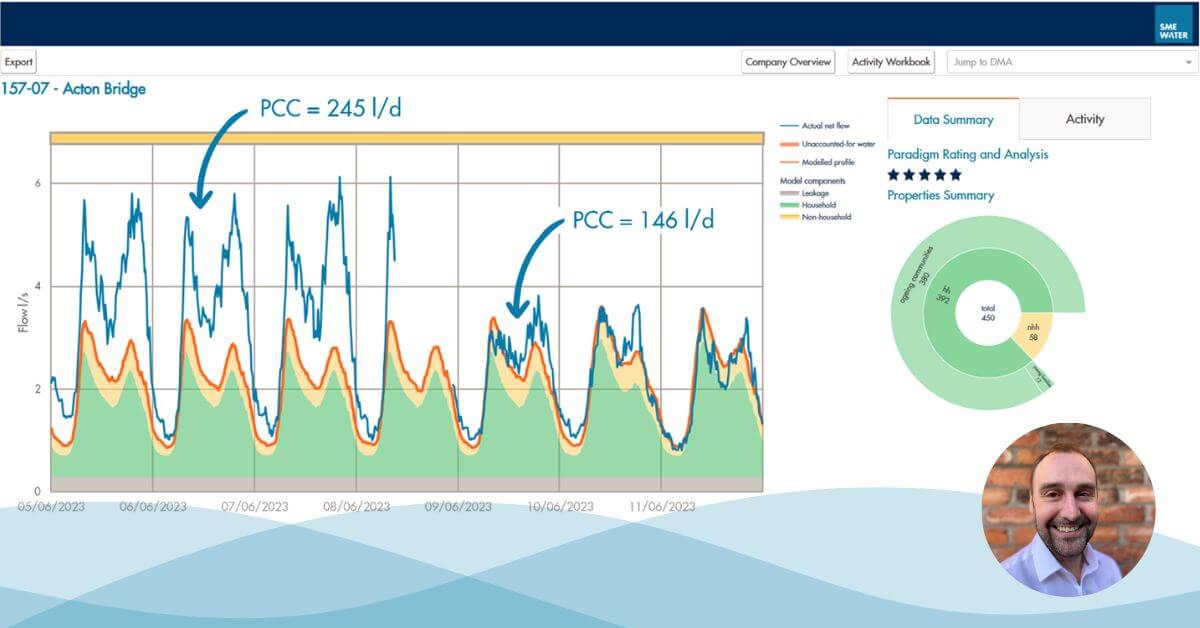Water is a precious natural resource. Whilst it feels like it rains nearly every day here in the UK, there is a genuine risk of water scarcity in future years, due to population growth and climate change. Forecasts predict that demand will exceed supply in the next 20-25 years. However, surveys indicate that people in the UK place water consumption low down on their list of environmental concerns, with nearly 75% of people believing that the UK has enough water supply to meet upcoming demands. With an ever-increasing population increasing daily water demand and increasingly erratic weather decreasing our supply, it is now more critical than ever for us to look at reducing our water usage.
How much water do we use?
On average, water companies tell us that the typical person uses just over 140 litres per day. Figure 1 shows a breakdown of how water is used within the home.
Figure 1: Breakdown of how water is typically used in the household
30% of domestic water usage is literally being flushed down the toilet. Previously, older toilets used up to 14 litres per flush, however nowadays dual flush toilets only use 2-3 litres for liquid waste and 4-6 litres for solid waste. Despite being an innovation designed to save water, the dual flush may actually be, in some instances, making things worse. Reports from Thames Water claim that dual flush toilets were likely to be wasting more water than they save due to a combination of leaks and confusion over which button to press. A previous poll by Thames Water named ‘Big Flush, Little Flush’[i] revealed widespread confusion, with more than 75% of people getting the function of the flush button the wrong way around. It was also found that most people would simply push both buttons as a matter of convenience. This has led many to question its design.
How much water can a leaky loo leak?
According to several studies conducted throughout the UK, a leaking toilet can lose between 200-400 litres of water per day. It is believed that between 5-8% of households have leaking toilets. This adds up to around 400 million litres of water, which is enough water to supply 2.8 million people. It is also believed that up to a third of all UK businesses have leaking toilets.
One of the main reasons why so much water is lost through leaking toilets is that it is difficult to spot. However, being able to identify a leaky loo can potentially halve a customer’s water bill. There are many initiatives within the UK looking to target leaky loos, including campaigns to raise awareness, identify improvements in the manufacturing process of dual flush toilets, and improve approaches to finding and fixing leaking toilets.
Per Capita Consumption (PCC) has been a commonly used metric within the water industry, and there have been numerous campaigns over the years aimed at reducing the average PCC. None of which have been overly successful. The recent uptake in smart metering has provided interesting insights and confirmed that the typical person does not use the average PCC. In fact, the most common value for PCC is closer to 100 litres per person per day for unmetered customers and even less for metered customers. This is demonstrated in Figure 2.
Figure 2: Distribution of household count by PCC
Although Figure 2 shows why the average PCC is not a suitable value to represent a typical household, it does suggest that addressing the issues in homes that currently sit in the long tail highlighted will provide a significant leakage saving. A single leaky loo (up to 400 l/day) in a household comprising three people could increase consumption in that home from 420 l/day (3 x 140 l/day) to 820 l/day, almost doubling the typical consumption.
It is clear to see that an approach to target the 5-8% of homes and 33% of businesses affected by leaking toilets could potentially bring about a significant decrease in total water usage and a reduction in PCC. Waterwise claim that fixing leaky loos could contribute around 10% of any additional water capacity required to cope with future droughts[ii]. It will be interesting to see how the combined effort from UK water companies to combat this issue will impact future supply and demand.
[i]https://www.thameswater.co.uk/about-us/newsroom/latest-news/2019/nov/big-flush-or-little-flush
[ii]https://www.waterwise.org.uk/wp-content/uploads/2019/03/Leaky-Loo-Position-Statement-Summary.pdf





